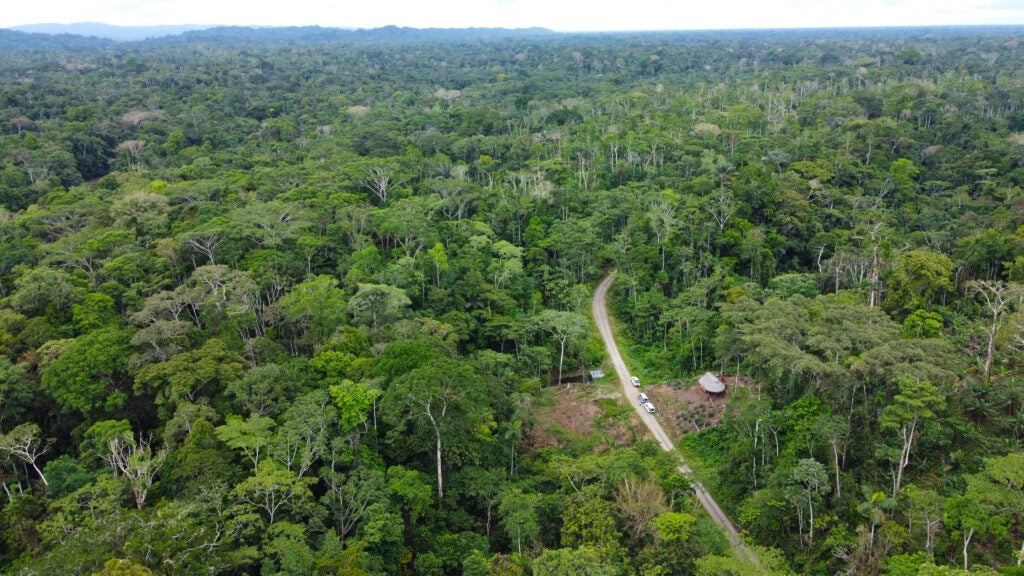How to act fast and smart (and where to move more cautiously) on nature-based climate solutions

This post is authored by Mark Moroge, Vice President of Natural Climate Solutions at Environmental Defense Fund.
We know that nature-based climate solutions are among our greatest assets when it comes to tackling climate change. Conserving, restoring and improving the management of nature – alongside reductions in new fossil fuel use – can provide at least 20% of the cost-effective climate mitigation needed between now and 2030 to stabilize warming to below 2 °C.
We also know that we need much greater investment in nature to achieve its climate change mitigation potential: the world must close a $4.1 trillion financing gap in nature by 2050 to achieve climate goals.
But with a wide variety of potential solutions on offer, and with carbon markets for financing these solutions under intense scrutiny, it is essential that credit purchases prioritize those solutions that have strong scientific backing. Otherwise, we risk undermining trust in the potential of these markets to deliver climate results.
That’s why a new scientific paper published this week in Nature Climate Change is so important. Here we explain the findings and provide two key lessons for advancing nature-based climate solutions.
Scientific confidence in different solutions varies
The study, carried out by 27 experts from 11 institutions, including the Environmental Defense Fund, The Nature Conservancy and Columbia University, brings a deep scientific assessment of 43 nature-based climate solutions that have been implemented or proposed for use in carbon markets.
Through an extensive literature review and expert elicitation process, it found a wide range in scientific confidence across, and within, the different solutions.
For example, tropical and temperate forest conservation and restoration reached near consensus across the experts with respect to the scientific foundations regarding management and GHG accounting, and their potential scales of impact.
That means that, if and when programs to conserve, protect and restore forests are implemented well (e.g. as under high-integrity forest carbon crediting approaches), we can be confident that these efforts will deliver real emissions reductions that benefit the climate – and that we can accurately measure and account for that impact. The study focused on the science, not the implementation plans – an important distinction.
Other solutions, such as some agricultural, grassland and ocean-based pathways, were found to have lower confidence in the fundamental science with respect to measurement of GHG changes, accounting for the effectiveness of management, and understanding risks and durability of actions.
Effective, lasting nature-based climate solutions are vital to address the climate emergency.
Two lessons for carbon markets
The first lesson is that companies purchasing carbon credits should focus near-term financing on the solutions with the strongest scientific foundations. That means doubling down on high quality forest carbon credits. Thankfully the research also highlights that existing financing is already well aligned with the science: 70% of nature-based carbon credits generated by the four major registries have come from the four solutions with the highest scientific confidence (tropical and temperate forest conservation and restoration).
Market actors – and groups that monitor their effectiveness – still have to ensure that forest conservation programs are properly implemented, with high integrity standards. Solid science does not guarantee good implementation. But they can now have confidence that the scientific foundations for these credits are solid. More investment in these categories is essential to meeting our collective nature and climate goals.
The second lesson is that there is, unfortunately, insufficient confidence in the scientific foundations underlying carbon crediting for several other nature-based climate solutions at this point in time. There are many unknowns. As a result, companies should exercise caution when it comes to purchasing carbon credits from solutions that do not yet have sufficiently solid scientific foundations. Without greater confidence in the science, credit purchases could result in ineffective or inefficient outcomes, which could threaten confidence in carbon markets more broadly.
That doesn’t mean abandoning these solutions. Programs in these categories can have positive benefits for biodiversity, water quality and communities. They can also have positive benefits for the climate – it’s just that the quantification of their climate impacts is currently uncertain. As the science improves, we should seek other financing mechanisms to incentivize these solutions outside of carbon crediting.
The study also encourages further climate research to help resolve uncertainties in the less-certain nature-based climate solutions, focusing on those with the greatest chance of becoming high confidence in the near-future. While focusing current financing on the solutions that already have strong scientific confidence, further research and innovation can help to resolve these uncertainties in other solutions, so that in the future we have a larger menu of high confidence pathways to support. The urgency of the climate challenge demands that we do both at the same time.
Conclusion
Effective, lasting nature-based climate solutions are vital to address the climate emergency. Understanding what the science tells us, and using this knowledge to help guide decisions will be important to strengthen, and scale, these solutions.
For more on this study, read the blogs












